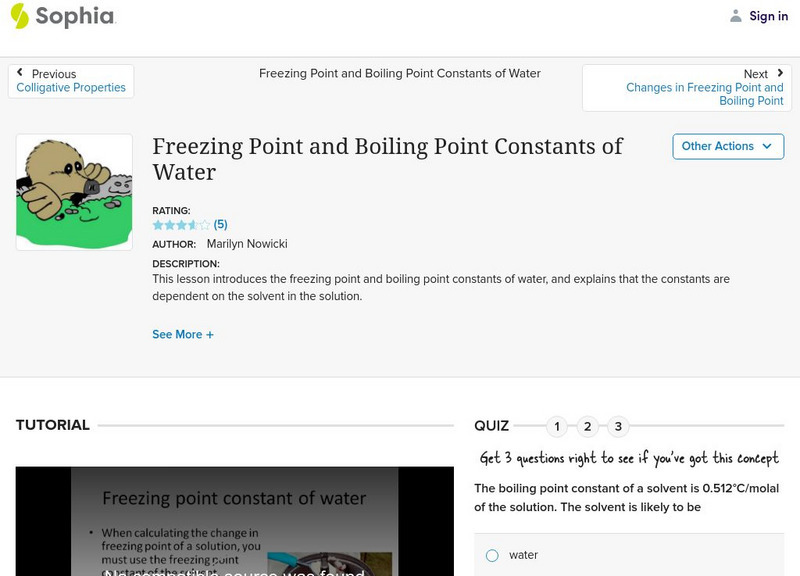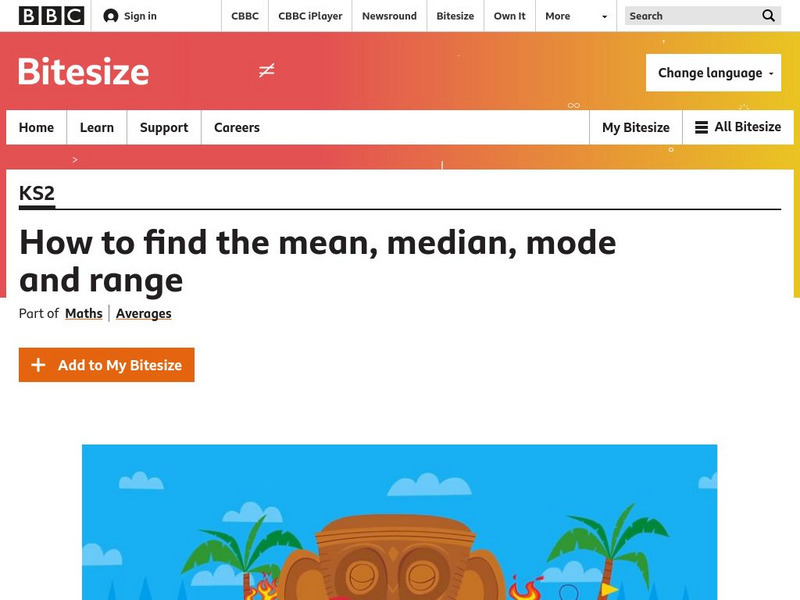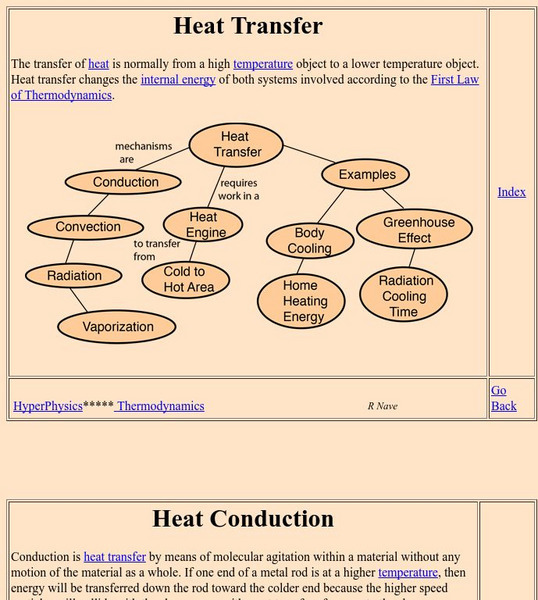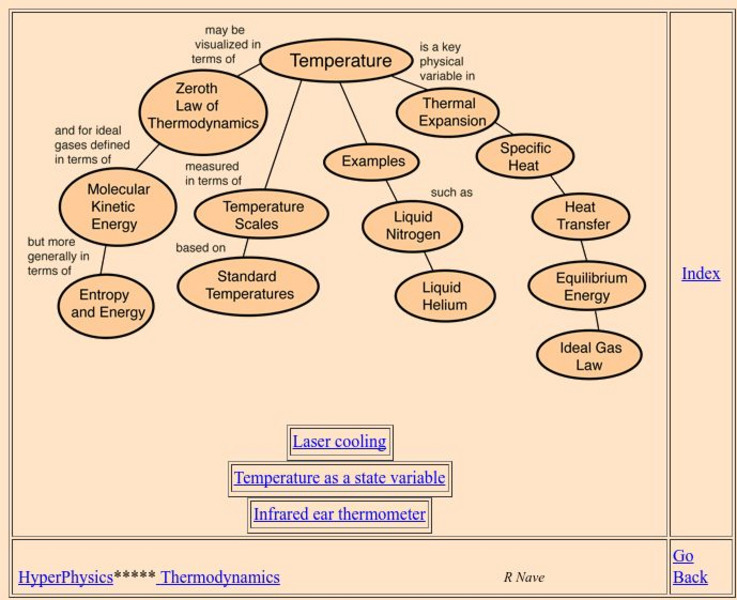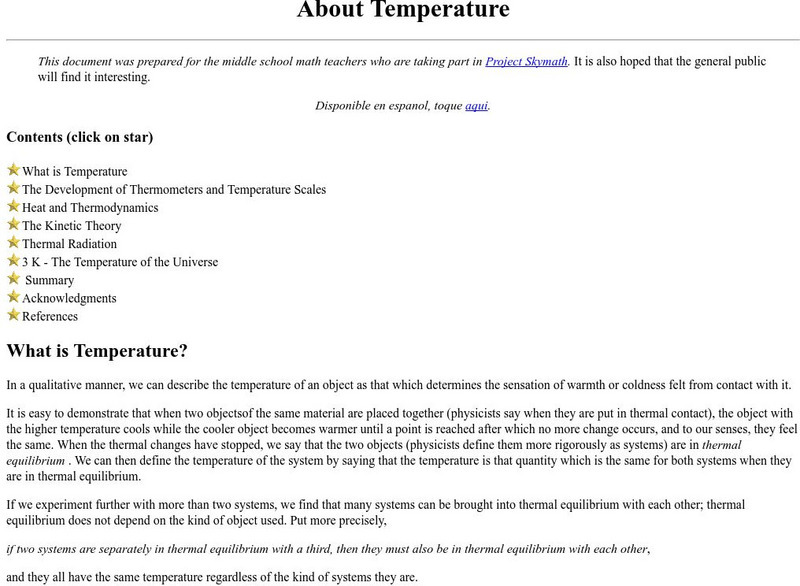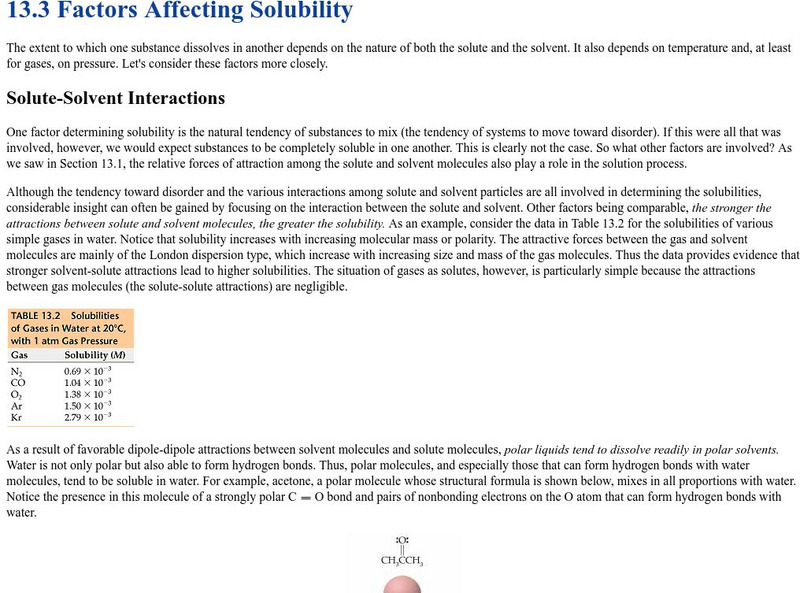Hi, what do you want to do?
Utah Education Network
Uen: Weather Walks
In this multi-day, students will learn weather through multisensory approaches. Students will make daily predictions. After each daily prediction, they will collect measurement and observational data by taking walks in different types of...
Sophia Learning
Sophia: Freezing Point and Boiling Point Constants of Water
This video tutorial reviews the freezing point and boiling point constants of water. [1:19]
University of Cambridge
University of Cambridge: Nrich: Game Do You Measure Up?
This interactive game gives you a variety of measuring tools and measuring opportunity. For this game of chance you choose the correct tool for the job that needs to be measured. Everything you need for this game is listed and/or...
BBC
Bbc Schools: Ks2 Bitesize: Science: Materials: Heat
A short, illustrated tutorial about how heat energy moves. After reading the material, take a quick quiz to check for understanding.
BBC
Bbc Revise Wise Maths: Mode, Median, Mean
This website from the BBC is a great introduction to averages (mean, median, and mode) and will take you through some interactive learning activities. A practice test and worksheet are also provided.
American Geosciences Institute
American Geosciences Institute: Wind Classroom Activities
When air is warmed, it expands and becomes less dense. As the air becomes less dense, its air pressure decreases. This occurs because molecules in warm air have greater kinetic energy (energy of motion) than in cold air. As the molecules...
Other
All math.com: Us/metric Conversion Tables
Convert metric measurements to U.S. Measurements and the reverse, too. Easy to follow tables have sections for area, length, mass,temperature and volume.
Sophia Learning
Sophia: Factors Affecting Reaction Rate
This lesson will describe the factors affecting reaction rate, including temperature, stirring (agitation), surface area (particle size), concentration.
Georgia State University
Georgia State University: Hyper Physics: Heat Convection
Using understandable words and exceptional graphics, this page describes the transfer of energy by means of the convection process. Contains several links to related topics.
Georgia State University
Georgia State University: Hyper Physics: Heat Pump
Heat flow from a hot region to a cold region is described and explained. Applications of this phenomenon (specifically heat pumps and refrigerators) are discussed. Excellent graphics.
Georgia State University
Georgia State University: Hyper Physics: Entropy
This informative site is from Georgia State University. The tendency of nature to move towards a more disordered state in an isolated system, a concept known as entropy, is discussed. This concept is well-depicted in meaningful diagrams.
Georgia State University
Georgia State University: Hyper Physics: Heat of Fusion
The heat of fusion is defined and described. A graphical representation of the heat of vaporization is given. A method for measuring and calculating the heat of fusion is also presented and explained.
Georgia State University
Georgia State University: Hyper Physics: Temperature Concepts
An indexing page which includes links to a wealth of pages detailing the conceptual meaning of temperature. A hypertext format allows the visitor to quickly gain access the desired information.
University Corporation for Atmospheric Research
Ucar: About Temperature
This site from the University Corporation of Atmospheric Research provides a lengthy page covering numerous topics including the difference between heat and temperature, the use of different temperature scales, thermal expansion, how a...
Other
Princeton Plasma Physics Laboratory: Fusion Basics
A wealth of background information on nuclear fusion and its potential use as a commercial energy resource. The advantages of nuclear fusion over other resources, the conditions required for its successful implementation and the future...
E-learning for Kids
E Learning for Kids: Science Underwater City: What Are Good and Poor Conductors of Heat?
John and Jessi are going underwater, and they need to stay warm. Help them learn about conductors of heat so they can stay warm.
Science Education Resource Center at Carleton College
Serc: How Does Weather Change?
For this lesson the young scholars learn that the weather and temperature change daily and throughout the day.
Savvas Learning
Pearson Education: Factors Affecting Solubility
Learn how the extent to which one substance dissolves in another depends on the nature of both the solute and the solvent.
Dan Satterfield
Wild Weather: Dan's Wild Wild Weather Page
A site to find out anything you want to know about weather, including clouds, tornadoes, satellites, radar, wind, climate, and more. Suitable for all ages. Also includes games, quizzes, and teacher resources.
Other
Idaho Department of Environmental Quality: Common Water Quality Measures
An organized resource highlighting properties of freshwater and water quality concerns.
Other
Aquaholic: Charles' Law
Charles Law is defined and explained. Sample problems are given and solved. Links to related topics.
University of Colorado
University of Colorado: Physics 2000: Temperature and Absolute Zero
Another awesome page from the Physics 2000 site. Entertaining, interactive, educational, understandable. Explains the meaning of temperature and absolute zero. Discusses the temperature scales. Requires Java.
Discovery Education
Discovery Education: Science of Everyday Life: It's Getting Hot in Here [Pdf]
Students explore solar energy in this lesson plan by collecting and analyzing actual temperature data from a simple model house.
Physics Classroom
The Physics Classroom: Thermal Physics: Thermometers as Speedometers
Through interactive exercises and illustrated tutorials, students answer the fundamental questions: What is the reading on a thermometer the reflection of? What does temperature measure?






